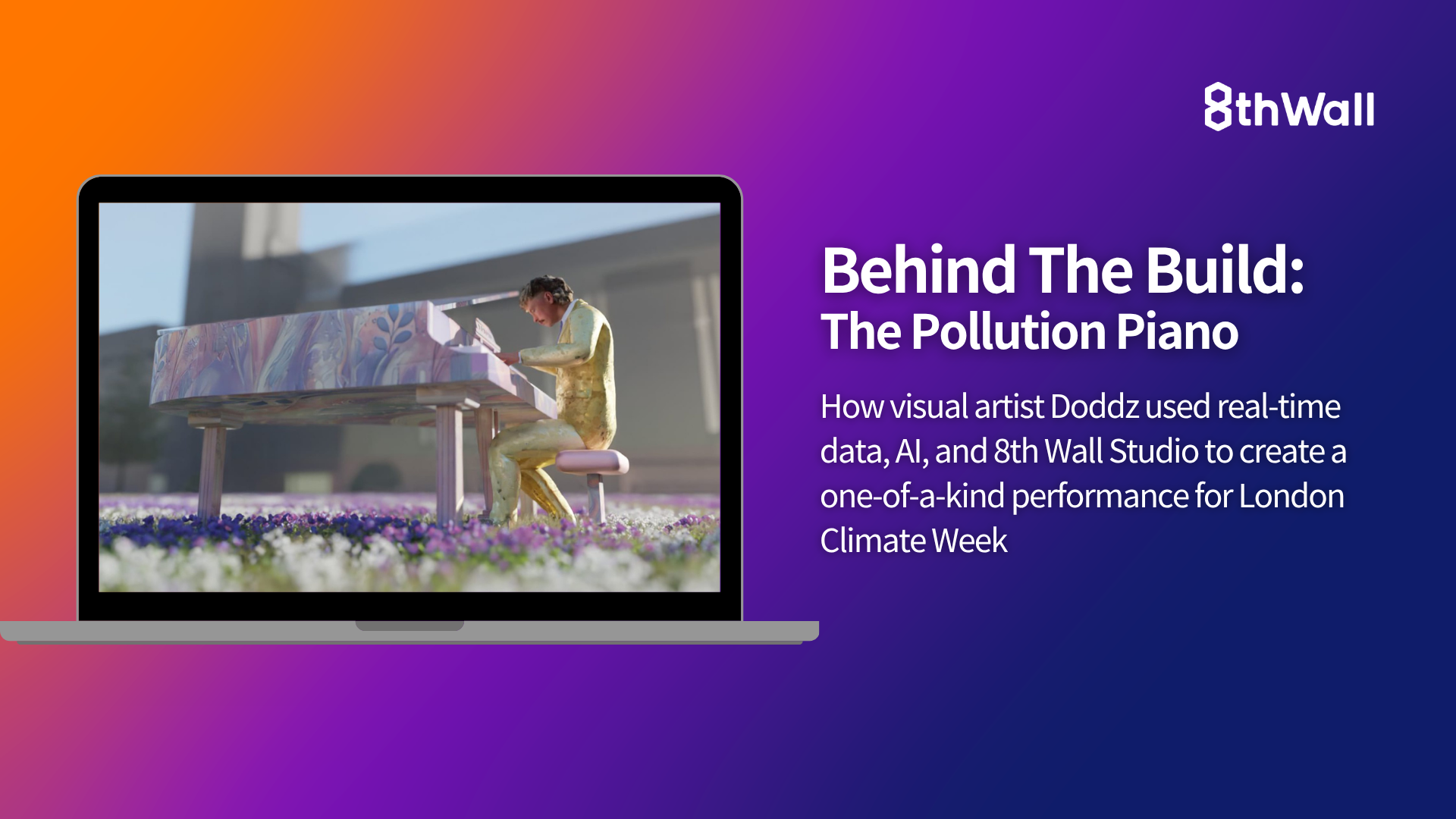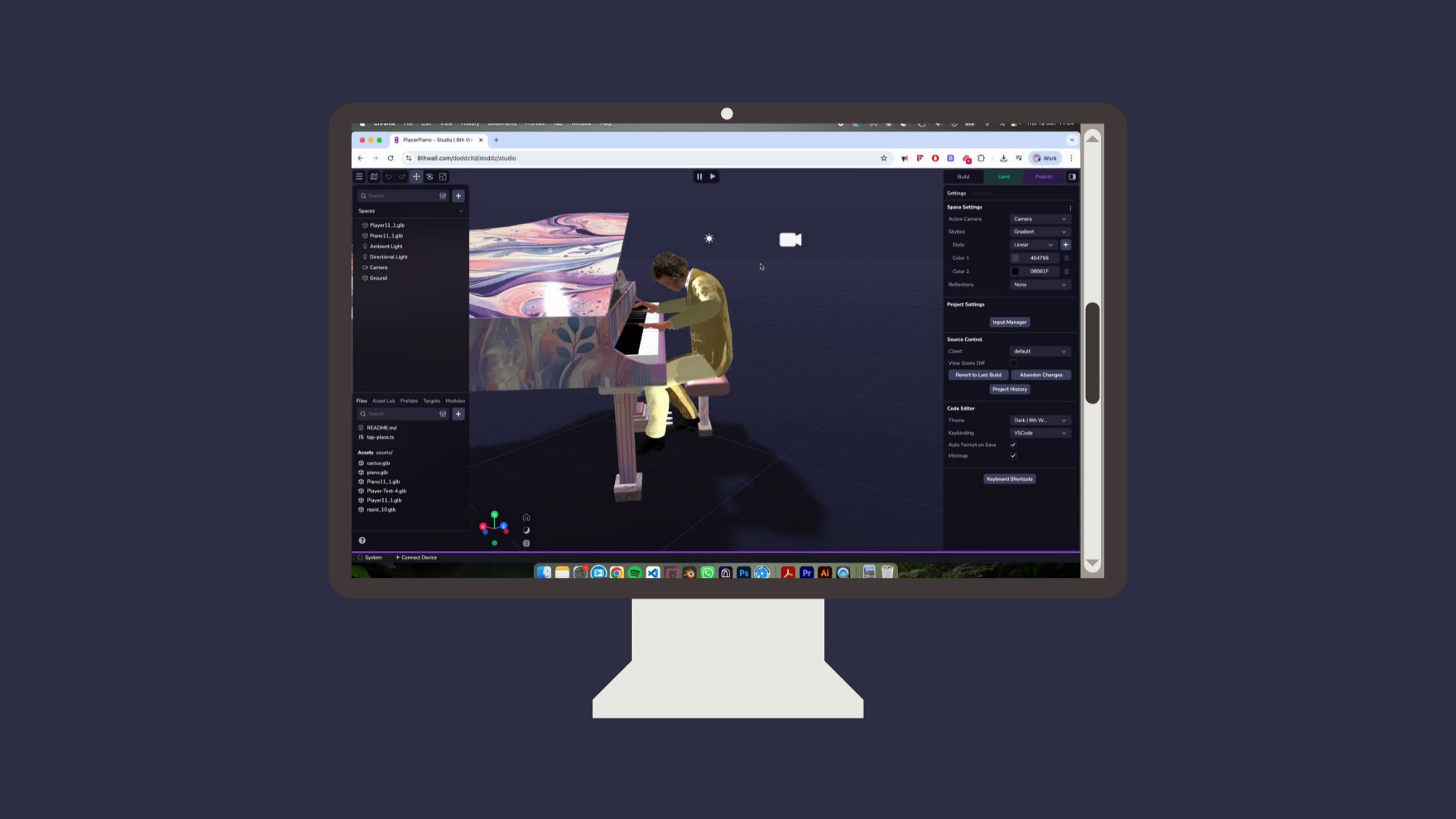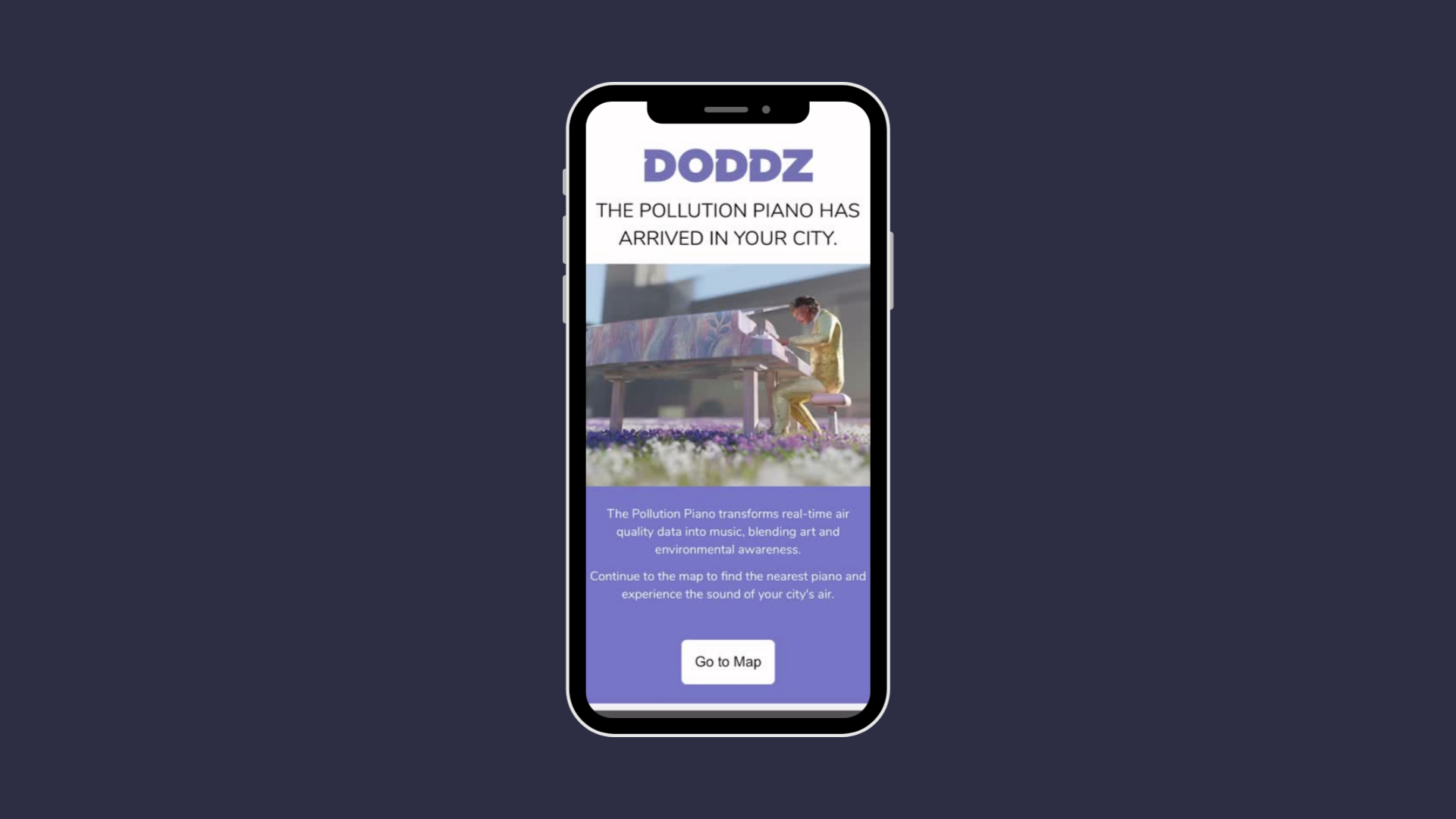8th Wall Blog
Behind the Build: Turning Air Quality into Music with The Pollution Piano
How visual artist Doddz used real-time data, AI, and 8th Wall Studio to create a one-of-a-kind performance for London Climate Week

The Pollution Piano is a location-based AR experience that transforms real-time pollution data into live music. Built in 8th Wall Studio by artist and creative technologist Doddz, it is launching during London Climate Week with a powerful mission: to help people see—and hear—the invisible.
At select outdoor locations in 12 cities worldwide, users can trigger a virtual piano performance that reflects the air quality around them. As conditions change, so does the tone of the music: clear skies generate light and melodic solos, while polluted air brings heavier, more urgent compositions. It’s a poetic mix of data, AI, music, and AR all delivered in the browser.
We caught up with Doddz to learn what inspired the project, how it was built, and how 8th Wall Studio helped turn pollution into performance.
 What inspired you to create The Pollution Piano, and how did you arrive at the idea of translating air quality into live, AI-generated music?
What inspired you to create The Pollution Piano, and how did you arrive at the idea of translating air quality into live, AI-generated music?
I’ve always been fascinated by music’s ability to create intimate, emotional moments. It can say things that words can’t to a global audience; it bypasses logic and language to go straight to emotion.
I wanted to create something that felt like magic, but the kind of magic rooted in truth. The air we breathe is invisible, but what if it could sing?
The Pollution Piano began as a thought experiment: Could I turn something we take for granted into something unforgettable? I built an instrument that doesn’t just play to you; it plays because of you, the viewer, who has triggered its composition. It’s a performance between the planet and the piano. My role was to help people hear it.
The idea came from wanting to create a unique performance for each viewer. By letting the air itself compose the music, the experience becomes personal. The story I’m telling with this piece is one of reflection and education, and I use new technologies to tell the stories in ways audiences haven’t experienced before. It’s a reminder that we’re all part of something much bigger, even if we can’t see it.
This project combines real-time environmental data, music, AI, and AR. What was the biggest creative or technical challenge in bringing all of that together?
The biggest challenge was also the most exciting part. None of this had been done quite like this before. There was no template to follow.
Translating air quality into music isn’t straightforward. I had to figure out how to shape that data into a creative prompt that would generate not just music but the specific music I wanted, something emotional, reflective, and thought-provoking. That took a lot of trial and error.
On the performance side, I also had to get the AI to compose music fast, in real time, without losing quality.
Why did you choose 8th Wall Studio to build this project? Were there any specific features or tools that made it possible?
I believe creating experiences for the web allows me to future-proof the art as best I can. It’s difficult to predict future consumption habits, but it is likely that whether we’re on phones or glasses, we’ll have a web browser to experience immersive art with.
With the release of 8th Wall’s new studio tool and the ability to see what I’m building in the browser viewer, I am able to create a little more easily as a visual person. Of course, 8th Wall is the software to use for location-based experience, so it was a real no-brainer.
How does the experience adapt across different cities and air quality levels? What makes each performance unique?
Even in the same location at the same time, the experiences are unique. The music is being generated in real-time, so even the same air quality reading will generate new music each time.
There are parameters on the music creation that allow good air quality to generate light-hearted, uplifting jazz piano solos and poor air quality to create more foreboding instrumentals. All designed on the surface to entertain through this novel and new medium, but offer a deeper layer of reflection on what exactly that music means to you, than the individual and the city you’re from.
What was your approach to making this feel like an intimate performance, even though it’s delivered globally through mobile?
In the past, I’ve used the shared AR template from Niantic to create experiences you can enjoy together, but with this one, it felt like a solo experience.
I used a 3D model of myself. I think having me in the experience adds a sense of intimacy; it’s not a random character, it’s me, a human, and you, a human. Experiencing the music for the first time together. The user is the instigator of the music, so they have as much to do with its inception as I do. They’re able to move around the piano as they see fit, creating a sense of ownership to the exploration, which I think all adds to the intimacy of the performance.
What advice would you give other artists or developers who want to use AR to drive awareness or social impact?
Start with the idea. What message do you want the user to understand? What emotion do you want them to feel? Then work backwards to see what type of technology would be a vessel to deliver that emotion. With any experience, not just those on social issues, you need to make the person feel something, so that has to be your starting point.
Where do you see The Pollution Piano evolving next? Are there plans to scale it, introduce new data layers, or explore other kinds of performance?
Currently, the experience is only available digitally in 12 locations.
There’s the possibility that in the near future, I will be adding more iconic locations, creating a physical piano installation where just the pianist appears digitally to play the physical instrument.
The exciting answer to this is that as opportunities come in and interest in the experience continues to grow the piece has the power to adapt and change to fit new locations, the art covers sustainability, music and technology so there’s lots of locations and possibilities with how you could see this experience appear in the future.

Try it for yourself
The Pollution Piano is live in select cities and accessible entirely in your browser. It’s an invitation to pause, reflect, and hear the world around you—one note at a time.
Ready to build something like this? Explore 8th Wall Studio to see how you can combine data, performance, and location to tell a story that sticks.
